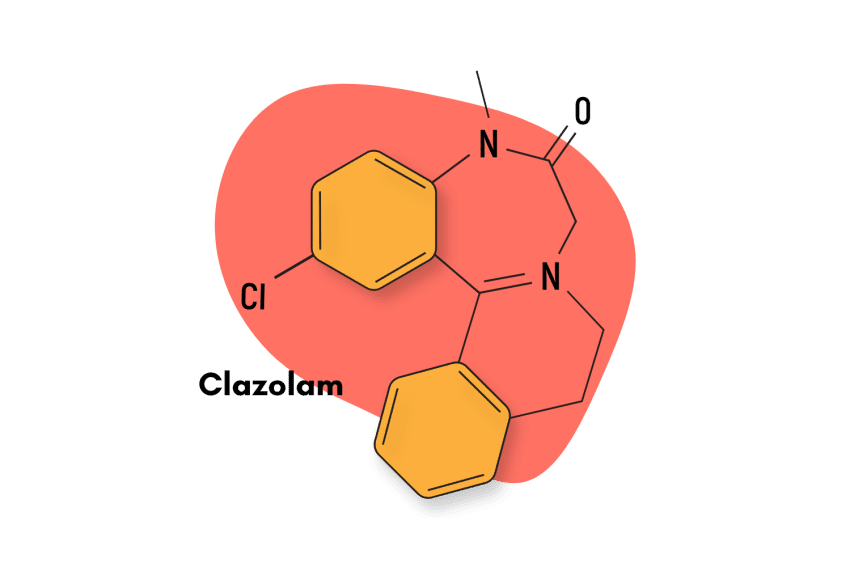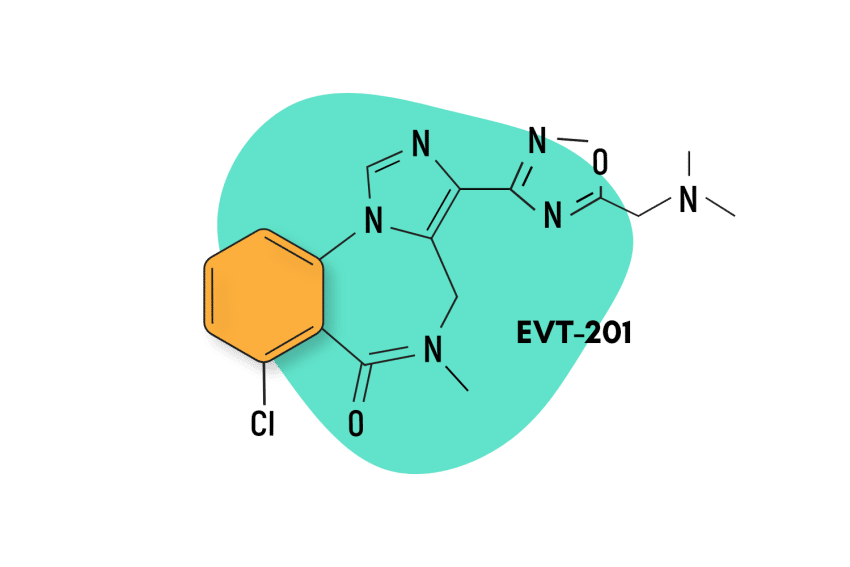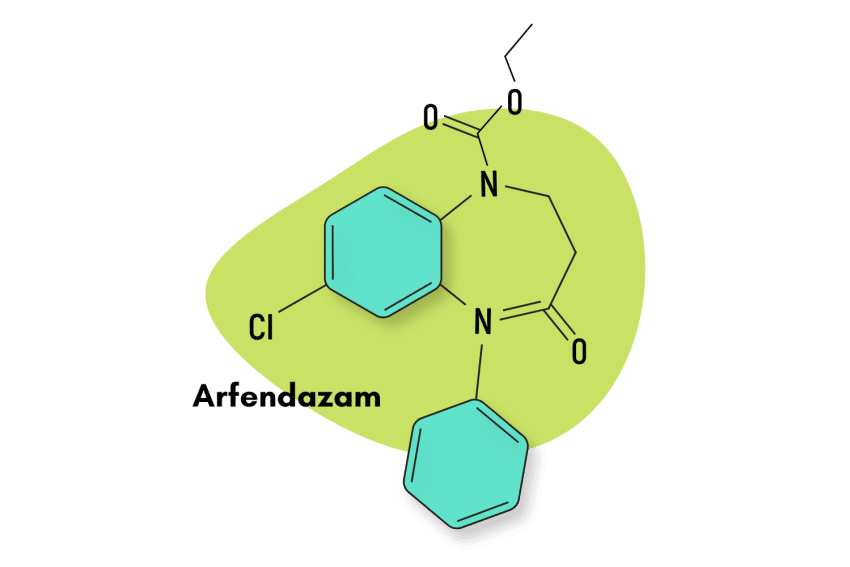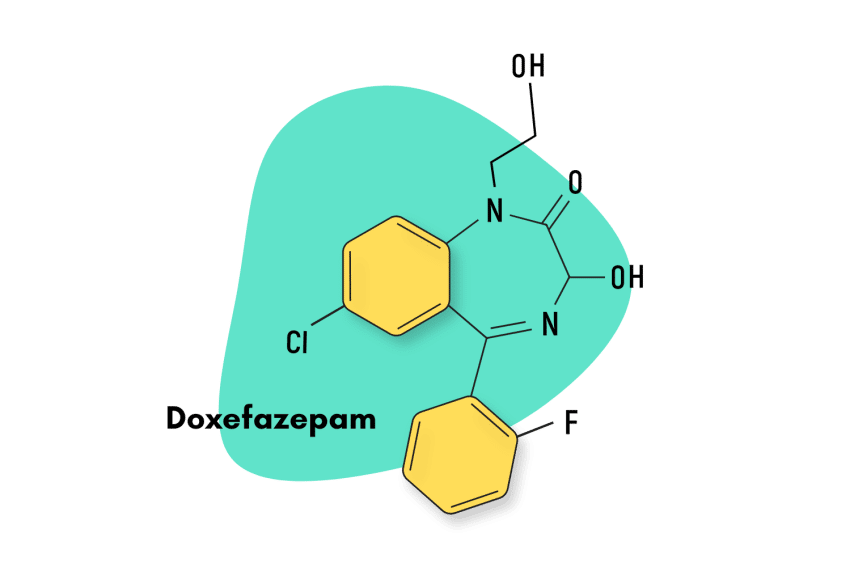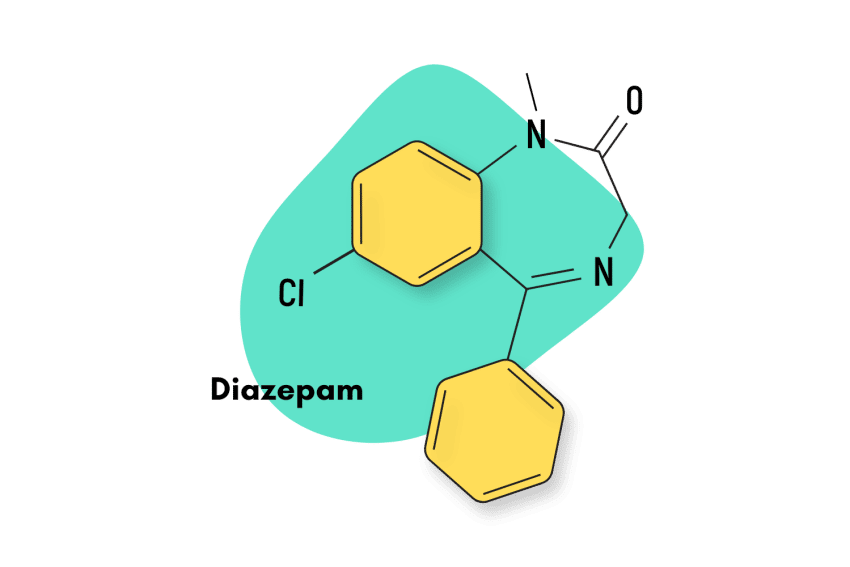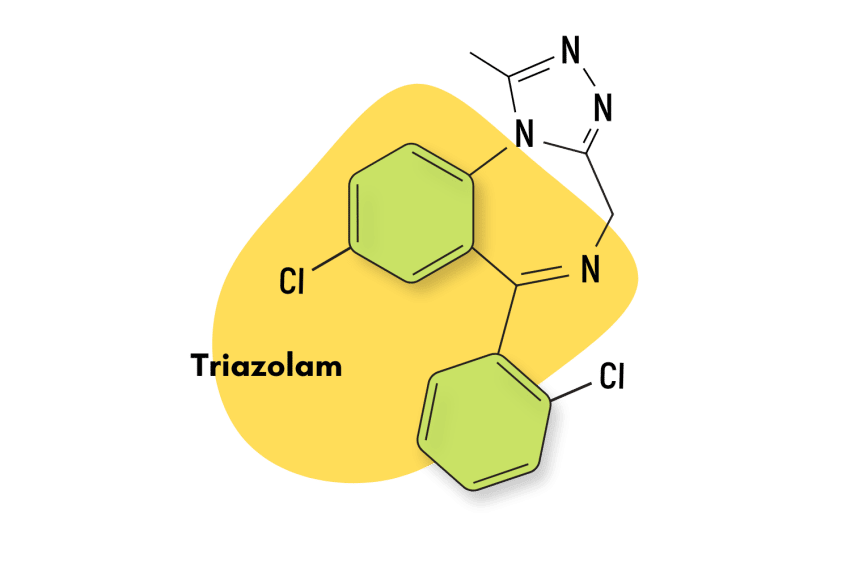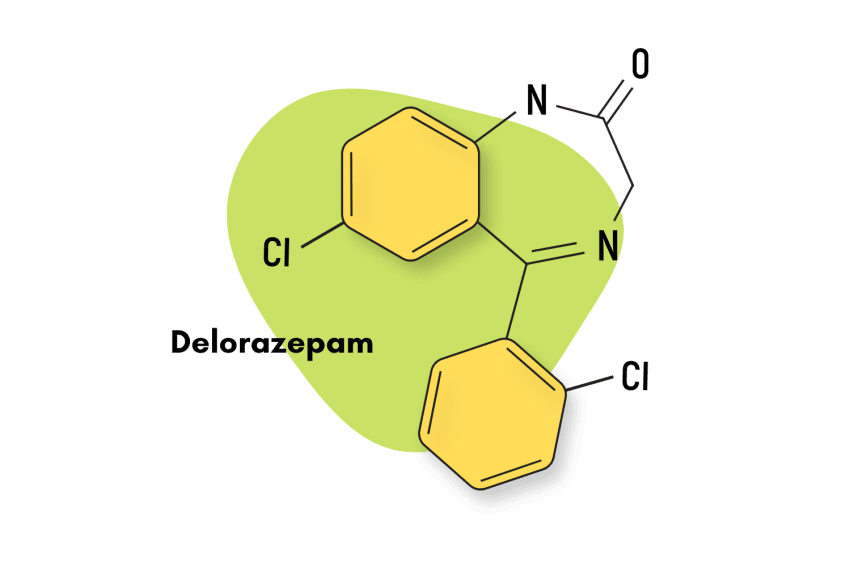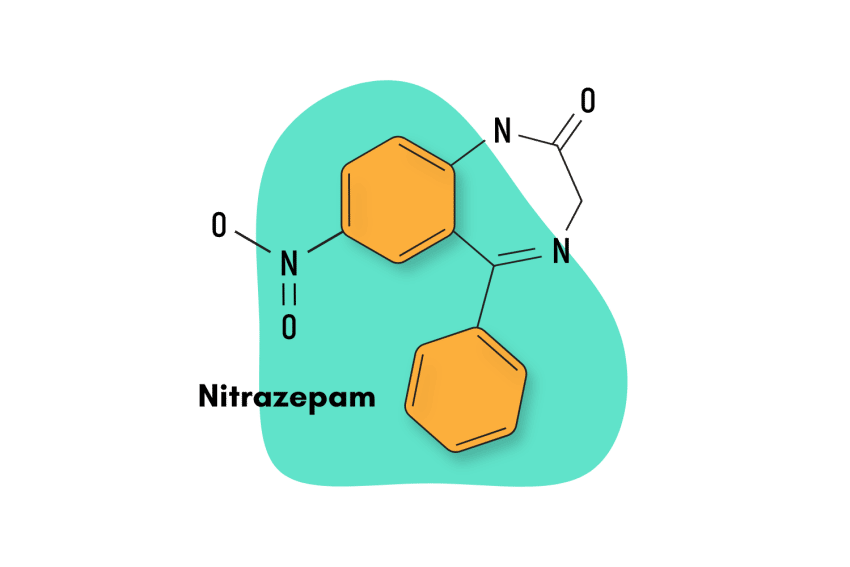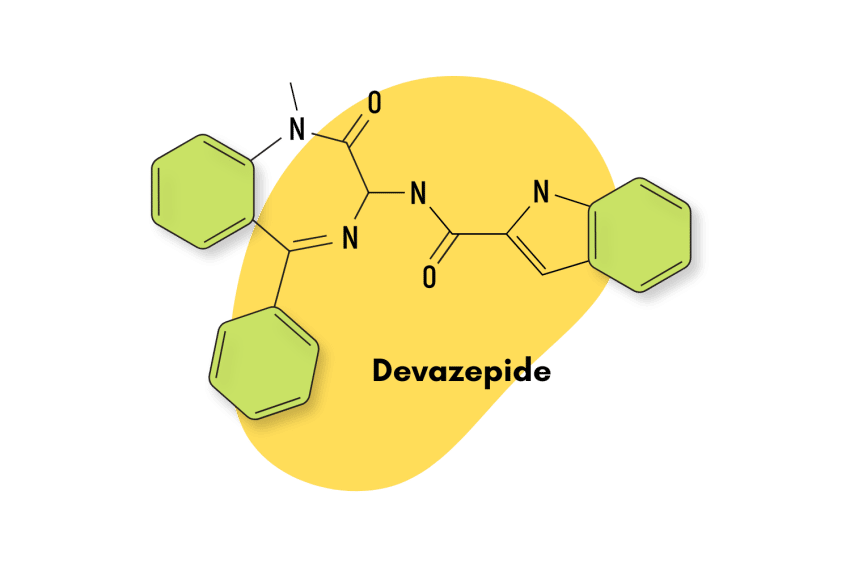Ketazolam (Anxon) Fact Sheet: Is It Really One of The Safest Benzodiazepines?
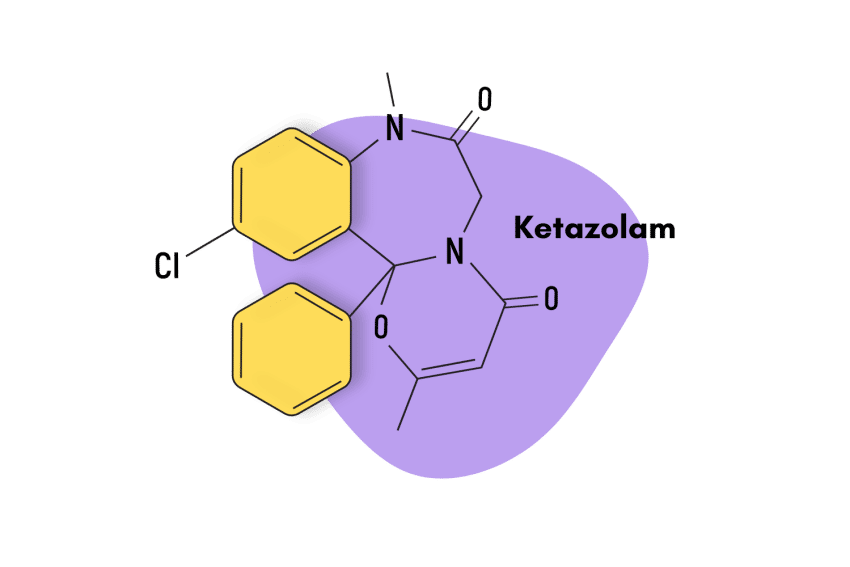
Ketazolam, commercialized under the names Anseren, Ansieten, Ansietil, Anxon, Marcen, and others, is a benzodiazepine derivative mainly used for its muscle-relaxant and anxiolytic (anti-anxiety) properties.
Although it hasn’t received approval as a medication in countries like the United States, Norway, Australia, or the United Kingdom, the main appeal of ketazolam appears to be its side effects profile. Evidence shows this drug’s side effects are more benign than standard benzodiazepines such as diazepam (Valium) [1].
With that said, side effects like addiction, interactions with other medications, and sedation are still risks when using ketazolam.
Ketazolam (Anxon) Specs
| Status | Approved Medication |
| Common Dosage | 15–30 mg |
| PubChem ID | 33746 |
| CAS# | 27223-35-4 |
IUPAC Name:
11-chloro-2,8-dimethyl-12b-phenyl-6H-[1,3]oxazino[3,2-d][1,4]benzodiazepine-4,7-dione
Other Names: Anseren, Ansieten, Ansietil, Anxon, Marcen, Sedatival, Sedotime, Solatran, and Unakalm.
Metabolism: Ketazolam is metabolized in the liver through N-demethylation into a number of different metabolites. Studies have identified desmethylketazolam, nordiazepam, diazepam, oxazepam, and temazepam as metabolites of ketazolam, but it also has other unidentified byproducts [2].
Duration of Effects: Ketazolam is a compound with a long elimination half-life, ranging from 30 to 100 hours.

How Strong is Ketazolam?
When it comes to potency, we know that ketazolam is about two-thirds as potent as diazepam, meaning it’s slightly below average.
With regards to its elimination half-life, ketazolam is considered to be long-acting (30 to 100 hours).
Benzodiazepine Dosage Equivalency Calculator
**Caution:** Benzodiazepines have a narrow therapeutic window. Dose equivalents may not be accurate in higher doses.
This calculator does not substitute for clinical experience and is meant to serve only as a reference for determining oral benzodiazepine equivalence.
Please consult a medical practitioner before taking benzodiazepines.
How Does Ketazolam (Anxon) Work?
Ketazolam works by “inhibiting” nerve transmission in the brain and body — but it doesn’t do this directly.
Like most benzodiazepines, ketazolam exerts its effects by altering the GABA receptors. These receptors are trained to respond to GABA, which is a naturally-occurring neurotransmitter responsible for slowing down brain activity when it becomes too active. GABA is like the brake pedal for the brain — helping to keep speed in check when things start to go out of control.
By altering the GABA receptors, ketazolam allows our natural GABA to exert a stronger effect. This results in a widespread slowdown throughout the nervous system.
This effect causes a dramatic reduction in anxiety levels (a condition associated with heightened brain activity), relaxation of the muscles, and even mild feelings of euphoria and well-being.
Researchers aren’t sure why, but in some studies, ketazolam has shown the ability to outperform diazepam in its ability to treat anxiety symptoms while producing fewer adverse effects in patients [1]. This suggests there are other mechanisms at play that researchers still haven’t uncovered.
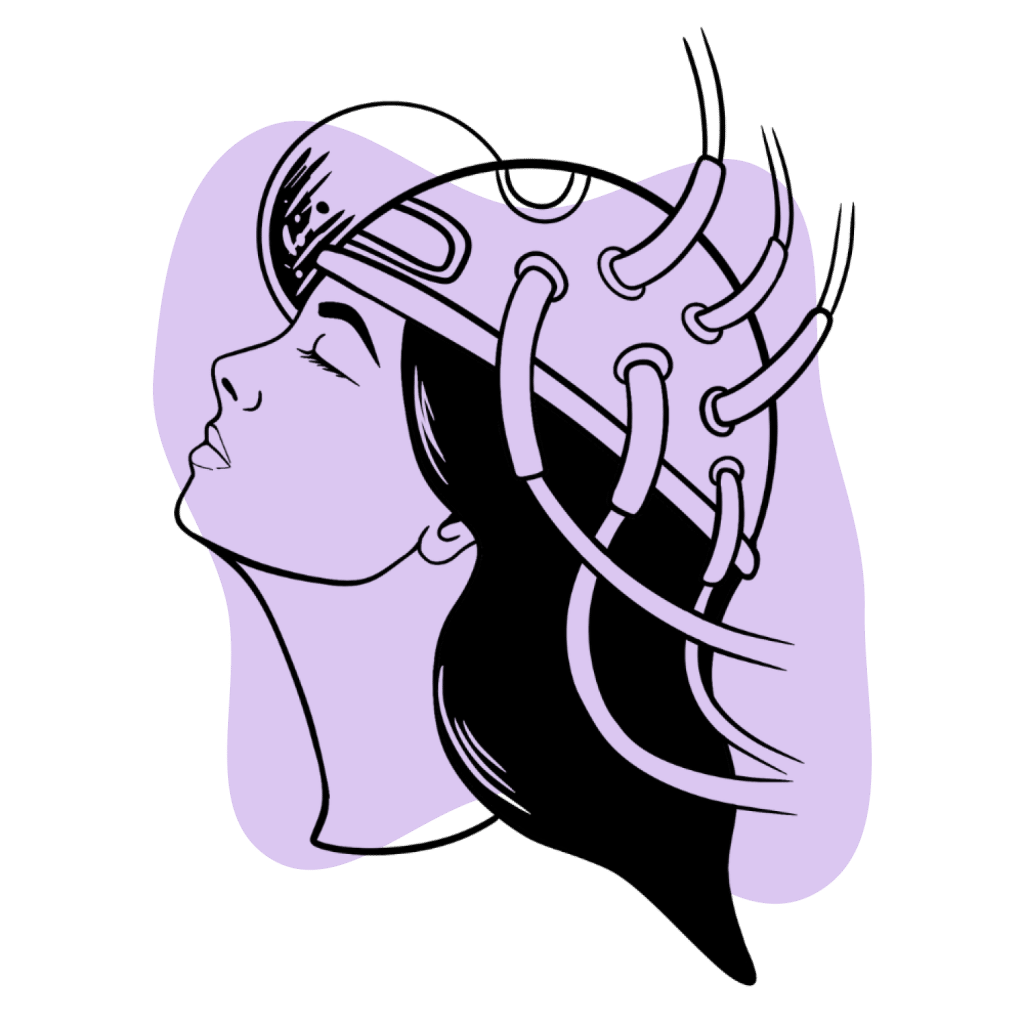
Is Ketazolam (Anxon) Safe? Risks & Side Effects
From the available research, it would seem that, when it comes to side effects, ketazolam has the edge over most other benzodiazepines.
In the areas where benzodiazepines are most dangerous, namely the capacity to induce dependence and the excessive suppression of the central nervous system, it’s still pretty much the same as all other benzos.
In other words, a more benign side effects profile is an excellent trait, but ketazolam still carries with it the same baseline risks as every other “classical” benzodiazepine.
These risks mostly refer to the ability of benzodiazepines to cause physical dependence and withdrawal symptoms, as well as their tendency to over-inhibit the CNS when combined with other depressive compounds, such as alcohol and opioids.
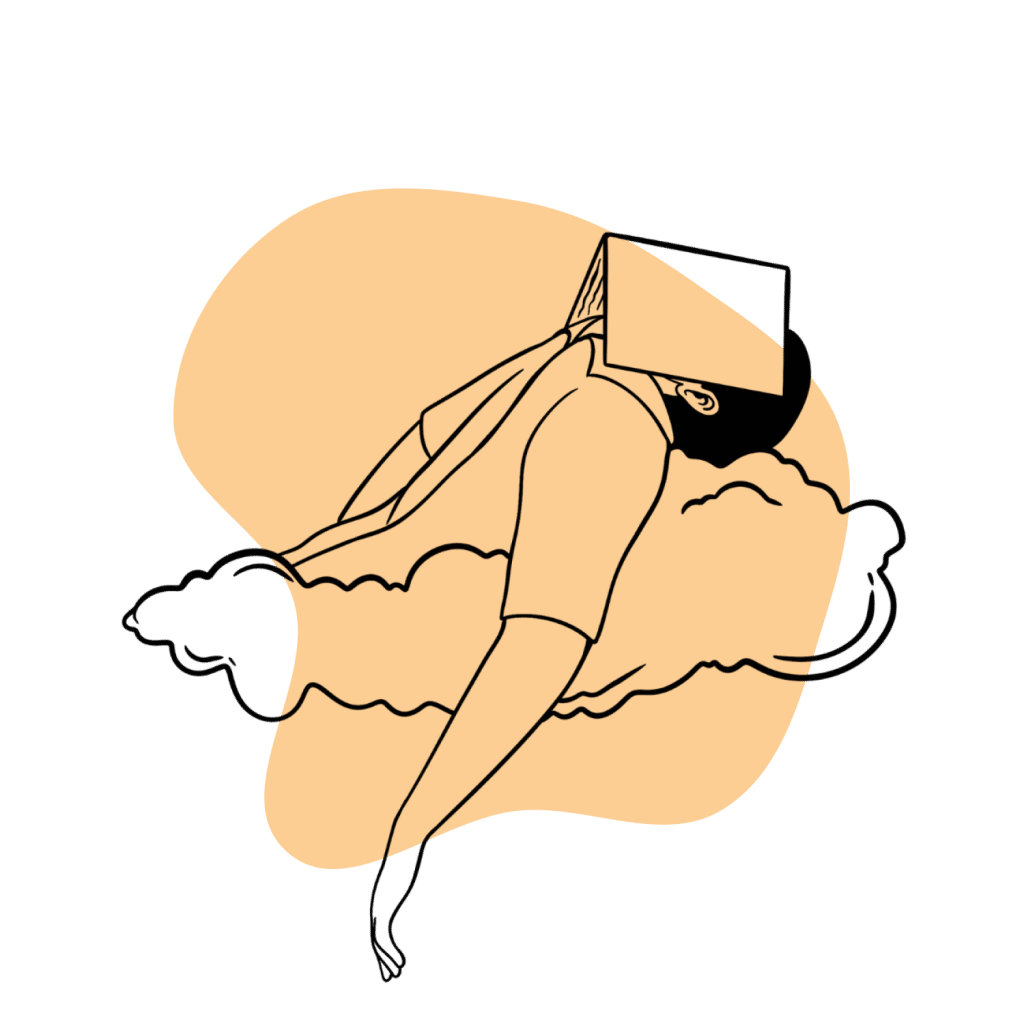
Side Effects of Ketazolam
The Spanish government has identified the following side effects of ketazolam:
- Aggressiveness
- Agitation
- Altered coordination
- Anterograde amnesia
- Changes in libido
- Confusion
- Daytime sedation
- Decreased alertness
- Delusions
- Fatigue
- Gastrointestinal problems
- Hallucinations
- Headaches
- Irritability
- Mood swings
- Muscle weakness
- Nightmares
- Psychosis
- Rages
- Rebound insomnia
- Restlessness
- Skin eruptions
- Suicidal ideation
The risk of side effects appears to be greater in children, senior patients, and those with conditions that might diminish brain function.
Additionally, tolerance to the effects of ketazolam tends to appear after consecutive use, usually after a few weeks.
Benzodiazepine Withdrawal & Dependence
As a benzodiazepine compound, ketazolam can induce the appearance of physical and psychological dependence.
The risk of dependence increases with the dose and duration of treatment and is also greater in patients with a history of drug abuse or alcohol use. Abrupt termination of treatment may be accompanied by withdrawal symptoms, such as headache, muscle aches, anxiety, tension, depression, insomnia, restlessness, confusion, irritability, sweating, and “rebound” phenomena (temporary reappearance of symptoms that led to the initiation of treatment). It can be difficult to distinguish between these symptoms and the original symptoms for which the medication was prescribed.
The best strategy to hedge against the formation of drug dependence is to limit both the dosage of ketazolam taken as well as the duration of treatment. Do not attempt to get off ketazolam without the assistance of a medical professional. The supervision of a doctor is often necessary to tailor an individual drug tapering procedure to the needs of the patient.
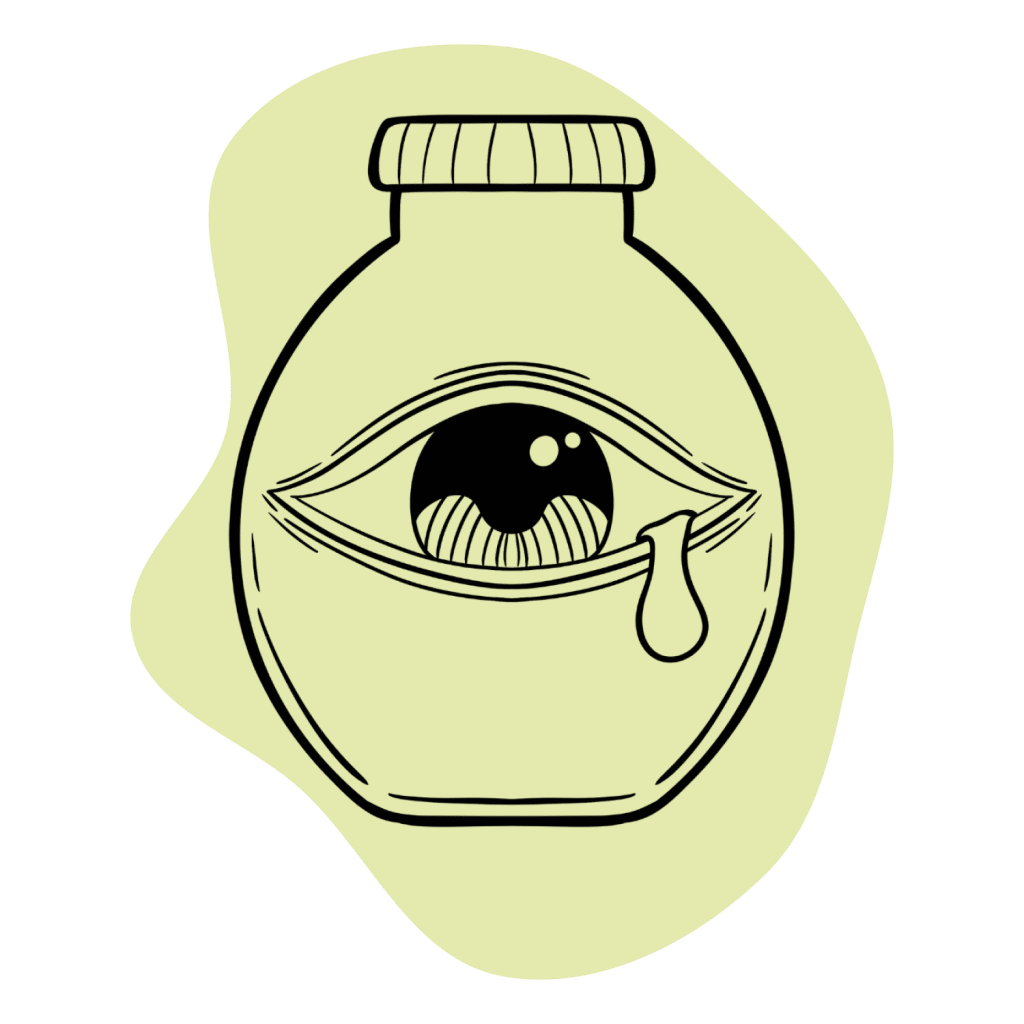
Harm Reduction Tips: Ketazolam (Anxon)
Here are some tips and tricks for staying safe while using benzodiazepine drugs:
- 🥣 Don’t mix — Mixing benzodiazepines with other depressants (alcohol, GHB, phenibut, barbiturates, opiates) can be fatal.
- ⏳ Take frequent breaks or plan for a short treatment span — Benzodiazepines can form dependence quickly, so it’s important to stop using the drug periodically.
- 🥄 Always stick to the proper dose — The dosage of benzos can vary substantially. Some drugs require 20 or 30 mg; others can be fatal in doses as low as 3 mg.
- 💊 Be aware of contraindications — Benzodiazepines are significantly more dangerous in older people or those with certain medical conditions.
- 🧪 Test your drugs — If ordering benzos from unregistered vendors (online or street vendors), order a benzo test kit to ensure your pills contain what you think they do.
- 💉 Never snort or inject benzos — Not only does this provide no advantage, but it’s also extremely dangerous. Benzos should be taken orally.
- 🌧 Recognize the signs of addiction — Early warning signs are feeling like you’re not “yourself” without the drug or hiding your habits from loved ones.
- ⚖️ Understand the laws where you live — In most parts of the world, benzodiazepines are only considered legal if given a prescription by a medical doctor.
- 📞 Know where to go if you need help — Help is available for benzodiazepine addiction; you just have to ask for it. Look up “addiction hotline” for more information about where you live. (USA: 1-800-662-4357; Canada: 1-866-585-0445; UK: 0300-999-1212).
Ketazolam (Anxon) Drug Interactions
The number one drug combination to avoid for those on a benzodiazepine treatment is the concomitant use of other compounds that can depress the CNS. These combinations potentiate each other and often result in an exponentially more powerful effect that can put the user at risk of respiratory depression, the leading cause of death among drug overdoses.
Some examples of problematic depressant substances to avoid using with ketazolam include alcohol, GHB, phenibut, opiates, barbiturates, and other benzodiazepines.
There are also other types of drug combinations to watch out for. Ask your doctor before taking any benzodiazepine drug if you’re taking other prescription medications or recreational drugs.

Contraindications For Ketazolam (Anxon)
A contraindication refers to a situation in which it is not considered safe to use a medication.
The contraindications of ketazolam include the following:
- Bronchitis
- Chronic obstructive pulmonary disease (COPD)
- Conjunctive use of barbiturates, opiates, or those suffering from alcoholism
- Intellectual disabilities due to frequent paradoxical reactions
- Ketazolam is contraindicated for the following conditions:
- Lactation
- Major depression
- Myasthenia gravis
- Over the age of 65 (high risk)
- Personality disorders
- Pregnancy
- Sleep apnea
- Under the age of 18 (not recommended)
- Use of heavy machinery or driving
Ketazolam (Anxon) Dosage
According to Spanish health authorities, these are the proper dosages for ketazolam:
| Indication | Adults | Older patients (65 and over) |
| Anxiety disorders | The dose varies from 15 to 75 mg per day, usually administered in a single dose at night, although it can also be divided into several doses throughout the day. The most common dose is usually 30-45 mg per day. | Initially, 15 mg per day, with appropriate dosage increases according to the needs and tolerance of each patient. |
| Muscle spasms | Effective doses range from 30 mg to 60 mg daily. | Initially, 15 mg per day, with appropriate dosage increases according to the needs and tolerance of each patient. |
Similar Benzodiazepine Alternatives
Most benzodiazepines share similar effect profiles. The major difference between them is the duration of effects (short, intermediate, or long-acting) and potency.
Ketazolam is a long-acting benzodiazepine, which makes it similar to drugs like chlordiazepoxide (Librium), cinazepam (Levana), delorazepam (Dadumir), diazepam (Valium), nordiazepam (Madar), quazepam (Doral), and others.
In terms of potency, ketazolam is active in the 10–20 mg range, which makes it similar to drugs like oxazepam (Serax), temazepam (Restoril), clobazam (Onfi), and midazolam (Versed).
Let’s examine some of the most closely related compounds to ketazolam:
Diazepam (Valium)
The clinical literature often compares ketazolam to diazepam. Since diazepam seems to be one of the metabolites of ketazolam, they are bound to share a certain degree of structural and pharmacological similarity. Diazepam is the more potent compound but certain studies suggest that it is ketazolam that is more effective at providing anxiolytic relief.
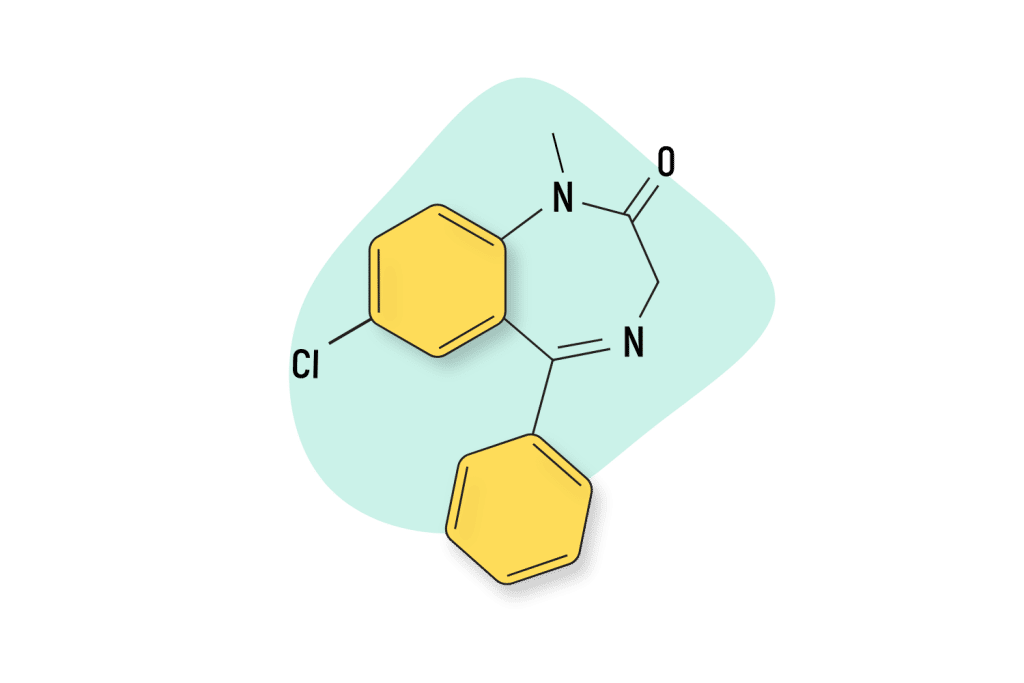
Nordiazepam (Madar)
Nordiazepam is another of the metabolic byproducts of ketazolam and happens to be one of the most long-acting benzodiazepines in existence. Ketazolam and nordiazepam are of equal potency and produce comparable effects.
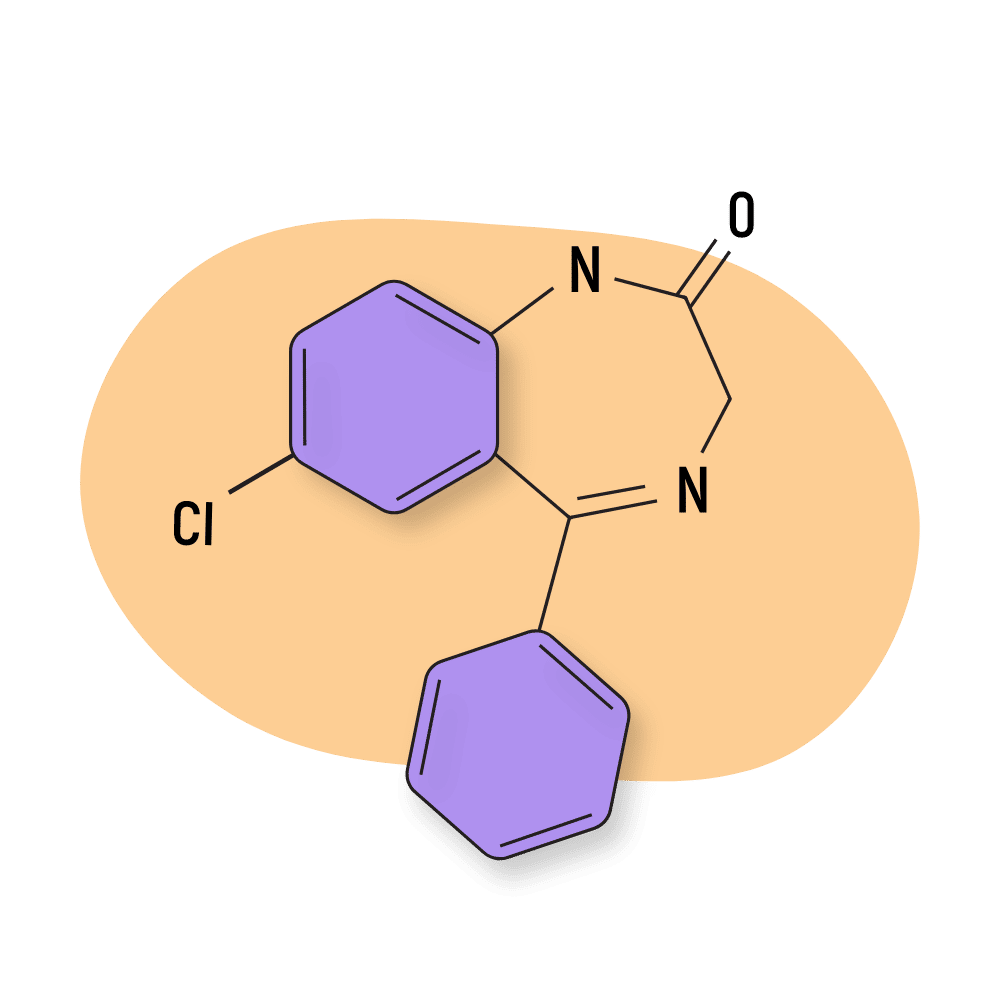
Oxazepam (Serax)
Oxazepam is another compound that is metabolically related to diazepam and, thus, to ketazolam. It’s a simpler compound with a lower potency and a slower elimination half-life of five to six hours. Unlike other ketazolam byproducts like diazepam and nordiazepam, ketazolam seems to display a higher affinity for hypnotic rather than anxiolytic effects. It was used for many years for the treatment of insomnia-related conditions before being largely replaced by other drugs.
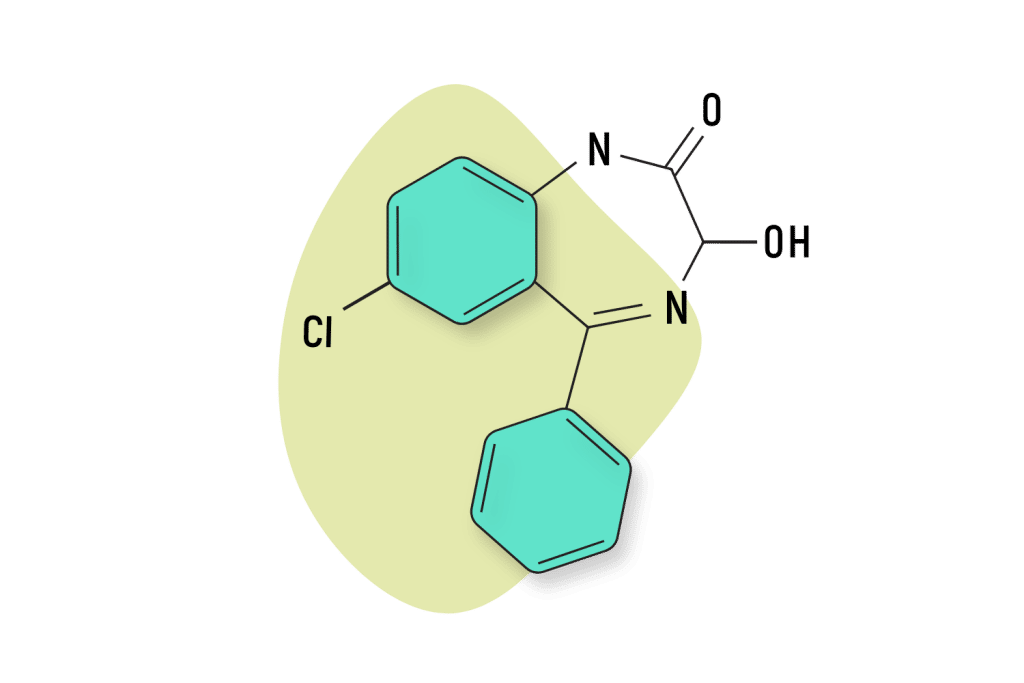
Natural Alternatives to Benzodiazepines
If you’re looking for an effective anxiolytic, sedative, or hypnotic compound, you should know that prescription drugs are not your only option. There is now a wide variety of natural alternatives you can try, like kratom, kava, or valerian, that offer comparable GABA-mediated effects (anti-anxiety, sleep-supportive, and muscle-relaxant).
These plant-based alternatives aren’t as potent, but in many cases, they can still be effective and have the added benefit of producing far fewer side effects and risks.
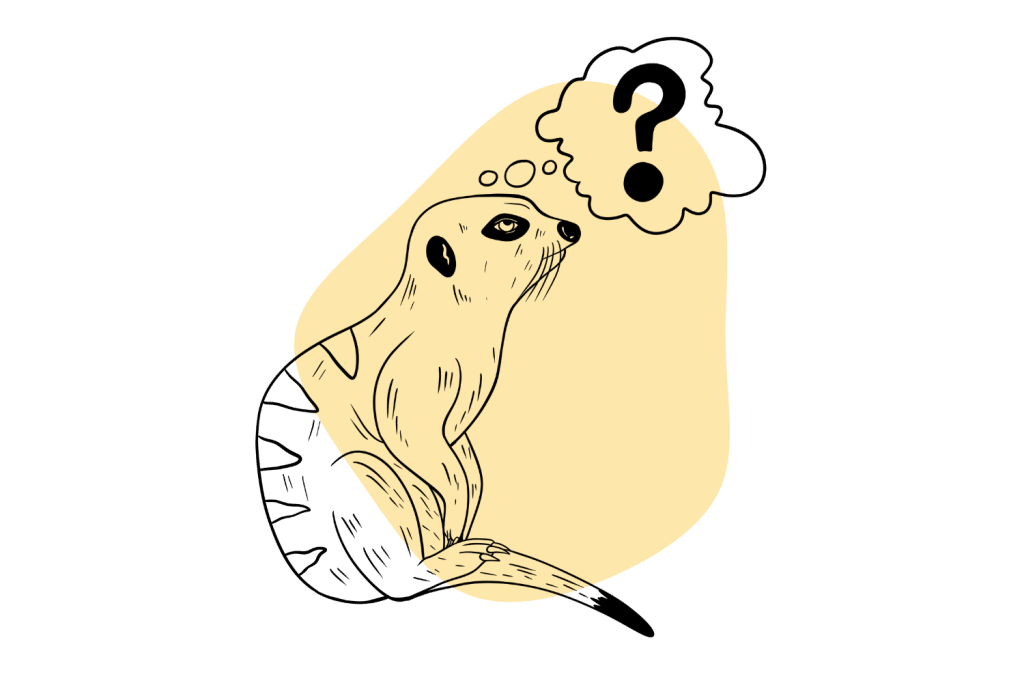
Ketazolam (Anxon) FAQs
How does ketazolam compare with diazepam in the treatment of muscle spasticity?
A double-blind, randomized study comparing the effects of ketazolam and diazepam had the following conclusions [3]:
- There was not a statistically significant superiority of either diazepam or ketazolam. Still, both relieve symptoms significantly better than the placebo, as measured clinically and by an electromyographic recording of deep tendon reflexes.
- Ketazolam is a relatively safe and clinically effective antispasticity agent (especially for patients with multiple sclerosis).
- The three standard medications for muscle spasticity (dantrolene sodium, baclofen, and diazepam) are known to cause side effects, both large and small, so ketazolam should now be considered a useful clinical alternative.
Is there any data on long-term ketazolam treatment?
Yes. A study that lasted six months comparing both ketazolam and diazepam showed that ketazolam was as efficacious as diazepam in treating anxiety and resulted in fewer side effects. In general, though, no adverse effects were noted in either group, and both benzodiazepines were safe and well-tolerated [4].
Additionally, no symptoms of physical dependence or tolerance were observed. The study’s results seem to suggest that diazepam and ketazolam are safe and efficacious for at least six months of continuous dosage.
References
- Anhalt, H. S., Young, R., & Roginsky, M. (1980). Double-blind comparison of ketazolam, diazepam, and placebo in once-a-day vs. tid dosing. The Journal of Clinical Psychiatry.
- Melo, P., Bastos, M. L., & Teixeira, H. M. (2012). Benzodiazepine stability in postmortem samples stored at different temperatures. Journal of analytical toxicology, 36(1), 52-60.
- Basmajian, J. V., Shankardass, K. A. N. W., Russell, D., & Yucel, V. (1984). Ketazolam treatment for spasticity: a double-blind study of a new drug. Archives of physical medicine and rehabilitation, 65(11), 698-701.
- Fabre, L. F., McLendon, D. M., & Stephens, A. G. (1981). Comparison of the therapeutic effect, tolerance and safety of ketazolam and diazepam administered for six months to out-patients with chronic anxiety neurosis. Journal of International Medical Research, 9(3), 191-198.

